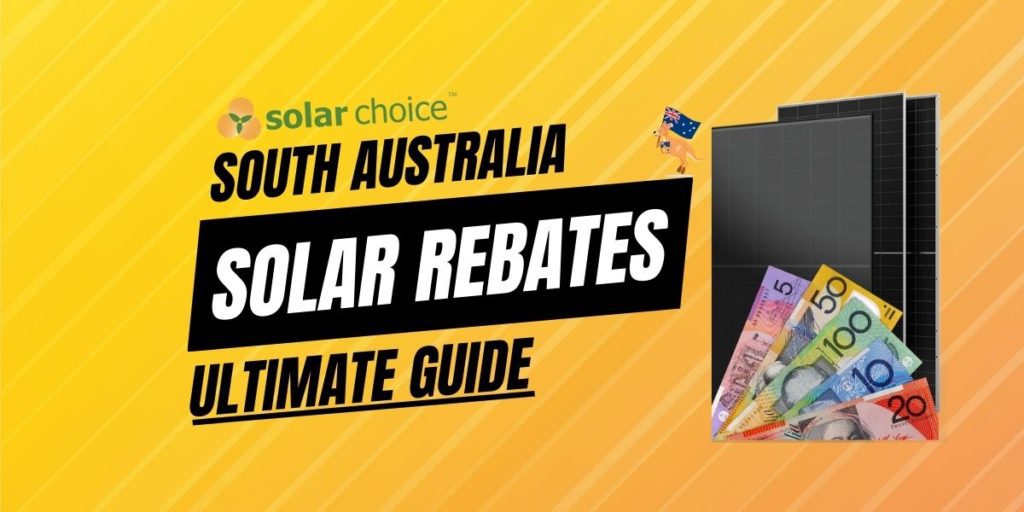Are you looking to save money on solar panel & battery installations in South Australia? The South Australia solar rebates program, combined with federal incentives, makes it easier to transition to clean, renewable energy. By taking advantage of these rebates and feed-in tariffs, homeowners and businesses across Adelaide and South Australia can significantly reduce upfront costs of solar system installation and the impacts of ongoing electricity bills.
In this guide, we’ll explore everything you need to know about SA solar rebates in 2024. From federal incentives like the Small-scale Renewable Energy Scheme (SRES) to local programs such as feed-in tariffs and battery storage incentives, we’ll help you navigate your options and maximize your savings.
Key Solar Rebates & Incentives in South Australia
| Program | Type | Details | Maximum Amount |
|---|---|---|---|
| Federal Solar Rebate (SRES) | Solar Panel Rebate | Small-scale Technology Certificates (STCs) | Approx. $400–$600 per kW |
| SA Feed-in Tariff | Feed-in Tariff Credit | Credits for exporting excess solar energy | 3–8 cents per kWh |
| City of Adelaide Solar PV Rebate | Solar Panel Rebate | Covers 20% of the installed cost for solar PV systems: – 1.5–10 kW: Up to $1,000 – 10–20 kW: Up to $2,500 – 20+ kW: Up to $5,000 | Up to $5,000 |
| City of Adelaide Battery Rebate | Battery Rebate | Covers up to 50% of installed costs for battery systems. | Up to $2,000 |
| SA Home Battery Scheme [Closed] | Battery Subsidy | Provided subsidies for battery storage systems | Up to $2,000 |
| Virtual Power Plant (VPP) | Battery Sharing Income | Incentives for participating in VPP programs | Varies by provider |
Compare quotes from up to 7 installers in your area now.
How Much Can You Save with SA Solar Rebates?
Example Savings for a Standard 6.6 kW Solar System in Adelaide
| Metric | Amount |
|---|---|
| Average System Cost | $5,510 |
| Federal Rebate (SRES) | -$2,000 |
| City of Adelaide Rebate | -$1,000 |
| Out-of-Pocket Cost | $2,510 |
| Annual Energy Savings | $1,622 |
| Payback Period | 1.5 Years |
Solar Battery Rebate Example
| Battery Model | Capacity (kWh) | Cost | Rebate | Out-of-Pocket Cost | Payback Period |
|---|---|---|---|---|---|
| Tesla Powerwall 2 | 13.5 | $13,500 | $2,000 | $11,500 | 7.2 Years |
| Alpha-ESS SMILE5 | 11 | $10,000 | $2,000 | $8,000 | 5.8 Years |
City of Adelaide Sustainability Incentives
Solar PV Rebate
- Covers 20% of the installed cost:
- 1.5–10 kW systems: Up to $1,000.
- 10–20 kW systems: Up to $2,500.
- 20+ kW systems: Up to $5,000.
- Eligibility:
- Available for tenants, concession card holders, and residential strata properties.
- Systems purchased through solar leases or power purchase agreements qualify if ownership transfers at the end of the term.
Battery Storage Rebate
- Covers 50% of installed costs, up to $2,000.
- Eligibility:
- Available to owner-occupied, tenanted, or Commonwealth concession card holder properties.
- Battery systems must be configured to optimize solar consumption.
To learn more you can explore the city of Adelaide grants and incentives for sustainability page.
Compare quotes from up to 7 installers in your area now.
Virtual Power Plant (VPP) Programs in SA
The SA Virtual Power Plant connects battery systems to work collectively as a power source. Benefits include:
- Reduced Electricity Rates: Participants enjoy discounted power prices.
- Additional Income: Some programs offer financial credits for grid support.
Key Providers:
- Simply Energy VPP: Offers $1,275–$2,550 in credits.
- Tesla Energy Plan: Provides $220/year in grid support credits.
- AGL VPP: Discounts of $1,000 on batteries with long-term contracts.
You can explore more in our comprehensive guide to Virtual Power Plants.
Understanding Feed-in Tariffs in SA
South Australia offers feed-in tariffs that allow you to earn credits for excess solar energy exported to the grid. However, rates vary by provider:
- Standard Rates: 3–8 cents per kWh.
- Premium Rates: Up to 10–12 cents per kWh (with specific providers).
While feed-in tariffs have decreased in recent years, self-consumption of solar energy remains the most effective way to save on electricity bills.
FAQs about SA Solar Rebates
What is the current solar rebate in South Australia?
What solar rebates are available in SA?
What is the solar rebate for 2024 in South Australia?
